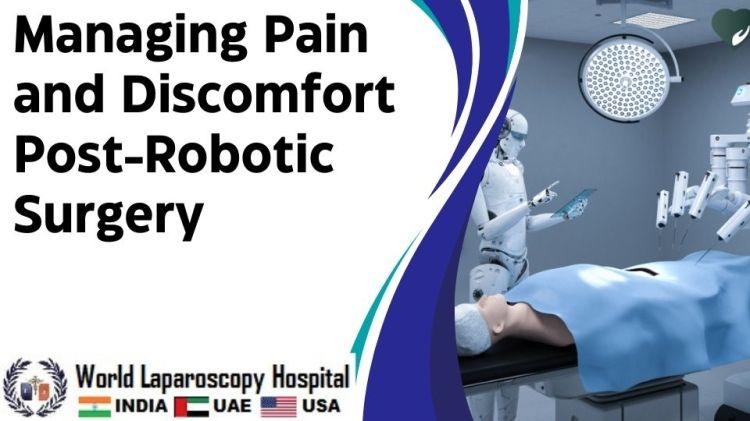Managing Pain and Discomfort Post-Robotic Surgery
Introduction
Managing Pain and Discomfort Post-Robotic SurgeryRobotic surgery has revolutionized the field of medicine, offering precision and minimally invasive procedures. While the benefits are substantial, managing pain and discomfort post-robotic surgery remains a critical aspect of the overall patient experience and recovery. This article delves into the various dimensions of postoperative pain management, exploring pharmacological and non-pharmacological strategies, personalized approaches, and the importance of effective communication between healthcare providers and patients.

Understanding Postoperative Pain
Postoperative pain is a common concern for individuals undergoing any surgical procedure, including robotic surgery. The pain is often multi-faceted, arising from factors such as tissue trauma, inflammation, and nerve irritation. In the context of robotic surgery, where smaller incisions are made, the intensity and nature of pain may differ from traditional open surgeries. A comprehensive understanding of the sources and types of pain is crucial for tailoring effective pain management strategies.
Pharmacological Approaches
-
Analgesic Medications:
- Nonsteroidal Anti-Inflammatory Drugs (NSAIDs): NSAIDs are effective in reducing inflammation and alleviating mild to moderate pain. However, their use may be limited due to potential side effects, such as gastrointestinal issues.
- Opioid Analgesics: Opioids are potent pain relievers but come with the risk of dependency and side effects. Careful consideration and monitoring are essential when prescribing opioids post-robotic surgery to balance pain control and mitigate risks.
-
Local Anesthetics:
- Local anesthetics administered during surgery can provide targeted pain relief in the immediate postoperative period. Techniques such as epidural or regional nerve blocks may be employed to numb specific areas, reducing the need for systemic analgesics.
-
Adjuvant Medications:
- Certain medications, such as anticonvulsants and antidepressants, may be used as adjuvants to traditional analgesics. These drugs can modulate pain signals and enhance overall pain management.
Non-Pharmacological Approaches
-
Physical Therapy:
- Early mobilization and guided exercises play a crucial role in preventing postoperative complications and reducing pain. Physical therapy tailored to the patient's specific surgery can enhance recovery and minimize discomfort.
-
Acupuncture and Massage:
- Complementary therapies like acupuncture and massage can contribute to pain relief and relaxation. Integrating these practices into a comprehensive pain management plan may offer holistic benefits.
-
Cognitive-Behavioral Therapy (CBT):
- CBT focuses on changing negative thought patterns and behaviors related to pain. By addressing psychological factors, CBT can be a valuable component of a multidisciplinary approach to pain management.
Personalized Approaches to Pain Management
-
Patient-Centered Care:
- Recognizing that pain is subjective, healthcare providers must engage in open communication with patients to understand their individual experiences and preferences. Patient-centered care involves collaborative decision-making, empowering individuals in their recovery journey.
-
Tailoring Medication Regimens:
- Prescribing medications based on the patient's pain intensity, medical history, and potential side effects ensures a personalized approach. A balanced combination of analgesics and adjuvant medications can optimize pain control.
-
Risk Assessment and Mitigation:
- Identifying patients at risk of complications, such as opioid dependency, allows for proactive measures. Implementing risk mitigation strategies, including patient education and close monitoring, is essential to ensuring a safe recovery.
Communication and Education
-
Preoperative Education:
- Providing comprehensive preoperative education equips patients with realistic expectations about postoperative pain. Understanding the anticipated discomfort and the planned pain management approach fosters a sense of control and reduces anxiety.
-
Continuous Communication:
- Establishing a continuous feedback loop between healthcare providers and patients is vital for adjusting pain management strategies as needed. Regular assessments of pain levels and medication efficacy enable timely interventions and modifications.
-
Supportive Resources:
- Offering access to informational resources and support groups can enhance patients' coping mechanisms. Knowing they are not alone in their postoperative experience can positively impact the overall emotional well-being of individuals recovering from robotic surgery.
Conclusion
Effectively managing pain and discomfort post-robotic surgery requires a holistic and personalized approach. Integrating pharmacological and non-pharmacological strategies, understanding the nuances of postoperative pain, and fostering open communication between healthcare providers and patients are essential components of a successful pain management plan. By prioritizing patient-centered care and tailoring interventions to individual needs, the medical community can contribute to a smoother recovery process and improved outcomes for those undergoing robotic surgery.
